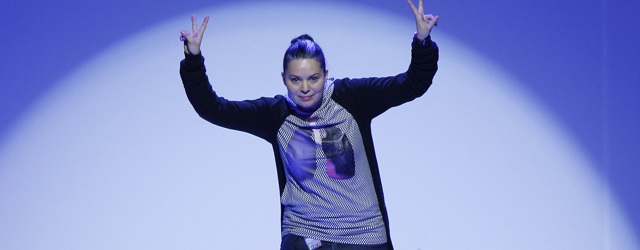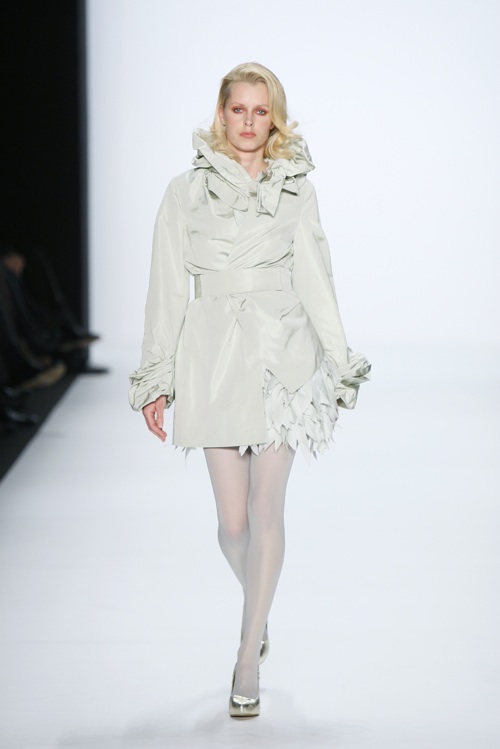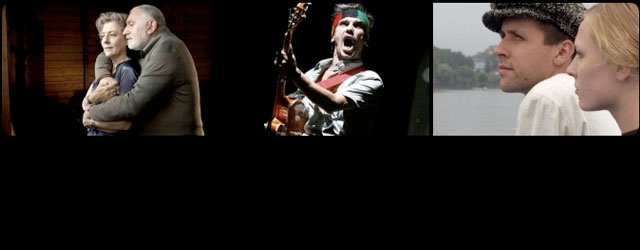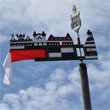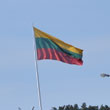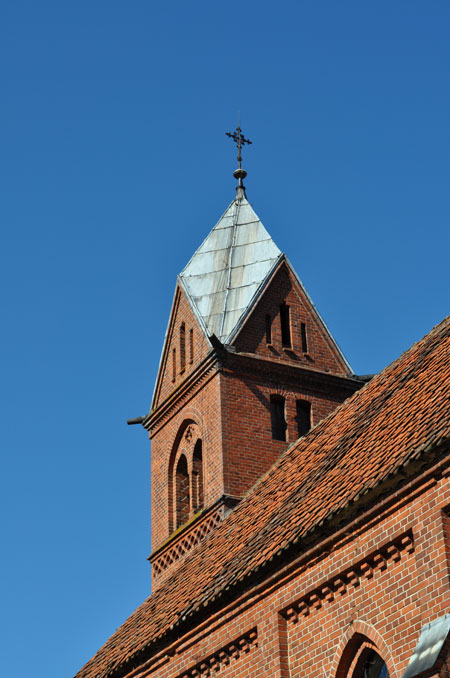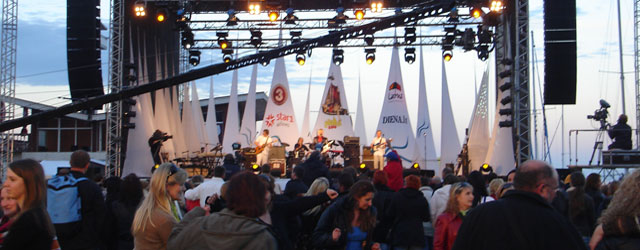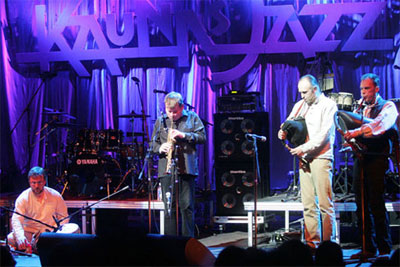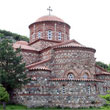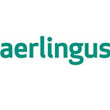The theme to the Usedom Baltic Fashion Catwalk held at Berlin Fashion Week Autumn/Winter 2011 was from the Bath Tub for the Berliners to the Fashion Island of the Baltic Sea. The show has been a platform for designers from the Baltic region for more than 10 years. The show featured: Marita Huurinainen (Finland) – Wave and Poems; Agnese Narnicka (Latvia) – Coming Soon; Grosser Heinrich (Germany) – Blue – the foxes of August 2nd; Zanete Auzina (Latvia) – The Dream. Show”; and Sandra Straukaite (Lithuania). Check out our favourite top ten looks from the show below…
Lithuania
Kaunas International Film Festival
Taking place between the 1st and 17th of October, 2010, Kaunas International Film Festival is one of Lithuania’s most appreciated film festivals and the main film event in Kaunas, the country’s second largest city. It presents films that have been acclaimed worldwide and also showcases new talent. The main priority of Kaunas IFF is a combination of the artistic and social statements in film. In the ‘Wide Angle’ section, acclaimed films are screened that reflect both modern tendencies in film art and social issues relevant to the global context. Kaunas IFF is the only film festival in the region to present a special section on music films with ‘Music Moves the World’ and films about art in the ‘All the Muses’ section. These are the three main sections in the festival, with additional retrospective programmes and theme sections each year.
Kaunas IFF invites all cineastes and film professionals to see the most interesting and noteworthy films created over the past few years and to use Kaunas IFF as a mean of communication by participating in discussions, lectures and meetings with film professionals.
For more information visit www.kinofestivalis.lt
Related Images:
The Curonian Spit – Lithuania’s Own Riviera
Most people will have heard of Lithuania; many may even be aware that Vilnius is the country’s capital city. However, it may be a surprise to find out that Lithuania actually boasts some award-winning beaches and stunning UNESCO World Heritage sand dunes. The resort towns of the Curonian Spit have been attracting tourists for many years and with the fall of communism in 1991, Lithuania’s attentions have turned to the West.
A visit to the Curonian Spit is not as simple as jumping on a plane for two-and-a-half hours, but it is well worth that extra effort. Fly with airBaltic from London Gatwick South Terminal to Riga in Latvia, and then hop on a short flight to Palanga in Lithuania. Both Gatwick South Terminal and Riga have luxurious lounges in which passengers can relax before boarding the planes. It is well worth the investment, with complementary drinks, snacks, and in Riga, an impressively well-stocked water bar with water from thirty different countries. On arrival in Palanga, simply take a taxi or public transport to Klaipeda, the region’s largest city.
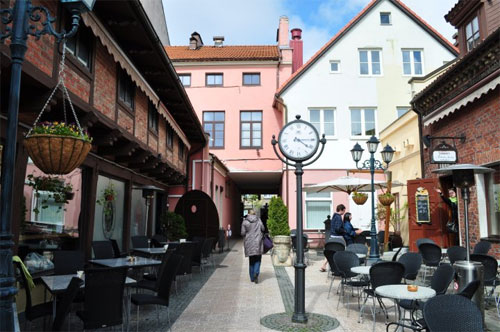
Although Klaipeda is quite industrial it is home to a particularly quaint old town and luxurious hotels, none of which has a particularly hefty price tag. Located in the up-and-coming port district, The Old Mill Hotel is one example of a brand new hotel, with lavish rooms, which does not come at a high price. With great public transport links to the resort towns of the Curonian Spit, Klaipeda is an ideal destination to base oneself. However, the city itself does have some interesting attractions, including the air-raid shelter at Memel-Nord where a rather animated local guide talks visitors through the history of the region and then demonstrates amber fishing. Lithuania is renowned for its amber. After dark stormy nights it is even possible for amateur amber enthusiasts to find small pieces washed up on the beach, but to be truly wowed, watch the pros.
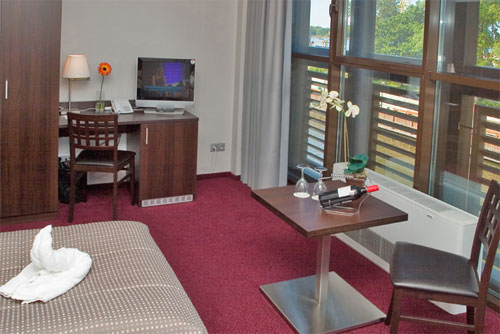
Just a short ferry journey from Klaipeda visitors will find the Sea Museum which boasts an aquarium, dolphin shows and even a giant performing sea lion, named Pirate. A trip to Lithuania’s most visited museum will certainly keep children amused. Similarly, visiting Klaipeda’s castle ruins and watching members of the local war society re-enact marching, shooting and even firing canons will keep children thoroughly entertained and enthralled.

While wandering the streets of Klaipeda, for a truly authentic Lithuanian experience look out for local festivities. During festival times traditional, local folk bands play music and dance in the street. Even outside the festivals there is a great deal of merriment to be had in Klaipeda. To take in the city as a whole a beverage or two must be consumed from the top of the recently refurbished Amberton Hotel. The new block is one of the highest buildings in the area and gives visitors a 360-degree panoramic view of the city, port and surrounding countryside.
However, for those who want to embrace laid-back Lithuanian life, take a short ferry ride to the Curonian Spit and stay in one of the resort towns, such as Nida. With its UNESCO World Heritage status, Nida is particularly strict with any new buildings and even refurbishment. All buildings are painted in certain colours, generally red, white and blue. Nevertheless, essential regeneration is taking place in Nida, and hotels such as Nidus have been thoroughly renovated to provide visitors with a comfortable place to stay.

Walking around Nida is the best way to see the sights. Visits to the lighthouse on Urbo hill (an area which during summer months plays host to a summer cinema festival) and a trek up the Parnidis dune are well worth the hard work on the thighs. From both vantage points visitors cannot fail to be impressed by the spectacular views. It is here in Nida that the real Lithuania can be found – here that countryside and the seaside are combined. This is, quite simply, visually spectacular.

Heading on to the beach, facing the aggressive Baltic Sea, is the only way to start the morning. While the wind whips through your hair and the sun beats down on your face, join in with the locals at the free

summer yoga sessions. Nevertheless, there is something for adrenaline junkies too. Irklakojis offers blokart (land-sailing) sessions, as well as kayaking, sailing, hiking and cycling tours. The provisions for cycling, be it on a tour or independently, are impressive in Nida and the surrounding resort towns. To take in the dramatic amalgamation of coast and forest hire a bike for the day and cycle the 50 kilometre cycle path which will take you through the pretty resort towns of Nida, Pervalka and Juodkrante. If in need of refreshments, stop off in Juodkrante to enjoy a refreshing Svyturys beer on board the town’s very own pirate ship.
During a stay in Nida a boat trip is a must. Local boat tours take tourists right up to the border of Kaliningrad, a Russian enclave. It is from the sea that it is finally possible to comprehend just how impressive the sand dunes are. Walking through the white sand of the Dead Dunes (do not stray from the path, as they are protected and hefty fines can be incurred if caught doing so), located between Pervalka and Juodkrante, may be as initially breathtaking as the Sahara desert but it is only from the sea that their sheer scale can be grasped.
For an awe-inspiring holiday consider visiting Lithuania’s Curonian Spit. Whether searching for a holiday with real value for money, rest and relaxtion or an action-packed adventure, Lithuania’s Curonian Spit has something to please everyone.
Flights: airBaltic fly directly from London (Gatwick airport) to Riga and Vilnius and offers connecting flights to Kaunas and Palanga. Prices for flights from London to Vilnius start at 57 EUR per person including all taxes if purchased online at www.airbaltic.com.
Airport: To book your place in the No 1 Traveller Lounge at Gatwick South Terminal visit www.No1Traveller.com.
Hotels: To make a reservation at Nidus in Nida visit www.nidus.lt ; to make a reservation at The Old Mill in Klaipeda visit www.theoldmill.lt.
Tourist Information: For further information about Lithuania visit www.lithuaniatourism.co.uk ; www.visitneringa.com/en ; www.klaipedainfo.lt
Related Images:
Highlights from Lithuania’s Curonian Spit
Last week I visited Lithuania with several other British journalists. First we visited the beautiful UNESCO World Heritage site Nida on the Curonian Spit, then the industrial town of Klaipeda. Check out highlights and sights from the trip here…
Related Images:
Spring & Summer Events in Lithuania
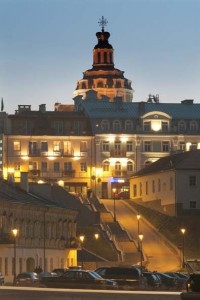
Tourists and locals alike enjoyed the exceptionally festive year Lithuania had in 2009. The country celebrated two significant occasions during 2009: the official 1,000th birthday of its name; and the European Capital of Culture was awarded to Vilnius, encouraging tourists to uncover more about the Baltic gem. The festivities have not stopped their and this year should prove to be just as much fun…
Kaziukas Fair, 5-7 March, Vilnius
The festival is dedicated to St. Casimir the patron saint of Lithuanian born in the 17th century. It is one of remarkable calendar festivals with deep traditions, each time presenting ingenious handworks, and having no rivals in the surrounding areas. For more information visit www.vilnius-events.lt/en/festivals/kaziukas-fair
Street Musicians Day, 1 May, Vilnius, Klaipėda
On the first Saturday in May thousands of people go out to the streets to play music. Street Musician Day is the event which unites all who speak the world’s most universal language – the language of music. www.gatvesmuzika.lt/en/
15th International classical music Festival “Pažaislis Music Festival”, 30 May – 29 August, Kaunas
The listeners of the most particular taste may find in the schedule of the festival something what interests them, starting from the old music and finishing with jazz, from the subtle chamber music to the grand vocal instrumental pieces, from the modern music premieres to the impressive pageants of Lithuanian dramaturgy in the surroundings of Kaunas Castle. www.pazaislis.lt
Related Images:
Kaunas Jazz Festival in Lithuania
The international Kaunas Jazz festival began as a modest affair in 1991. However, with artistic vision the festival has become more and more renowned each subsequent year. The polystylistic, democratic festival has become a holiday for Kaunas, the lead “importer” of jazz stars in Lithuania and the creative center of different international jazz styles. Every year Kaunas Jazz presents a wide and rich spectrum of modern jazz with participants from more than 20 countries taking part in the festival.
The festival will take place throughout April 2010.
For more information visit www.kaunasjazz.lt
Related Images:
Bargains Still to be had in Eastern Europe

Eurostat have revealed the results of their latest price survey across Europe, proving bargains are still to be had across Eastern Europe. The survey revealed that price levels in 2008 differed widely across Europe: Northern European countries tend to have the highest prices while the south-eastern European countries have the lowest prices. Southern and central European countries tend to show price levels closer to the EU average.
In Denmark consumer prices appeared 41% higher than the average of the 27 EU Member States, while in the Former Yugoslav Republic of Macedonia prices are 53% lower than this average. Among the EU Member States, the cheapest country is Bulgaria (49% below the average).
Food and non-alcoholic drinks are most expensive in Denmark and cheapest in Bulgaria. Taxes on food, alcohol and tobacco across the bloc’s 27 states are highest in Ireland and lowest in Romania. Regarding clothing prices, Britain is the least costly and Finland is the most expensive. Prices for consumer electronics are lowest in Britain and highest in Malta. Hotels cost the most in Denmark and the least in Bulgaria.
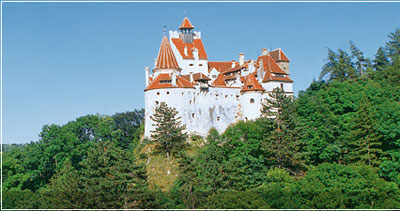
Eurostat examined prices of 2500 consumer goods and services across 37 European countries (27 Member States, the three Candidate Countries (Croatia, the former Yugoslav Republic of Macedonia and Turkey), three EFTA countries (Iceland, Norway and Switzerland) and four Western Balkan countries (Albania, Bosnia and Herzegovina, Montenegro and Serbia).
The results of the surveys are expressed in “price level indices” (PLIs), which provide a comparison of countries’ price levels with respect to the European Union average: if the price level index is higher than 100, the country concerned is relatively expensive compared to the EU average and vice versa, if the price level index is lower than 100, then the country is relatively cheap compared to the EU average.
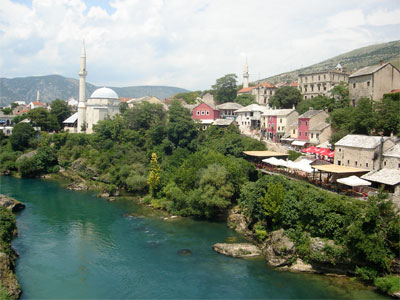
10 Least Expensive European Countries
1. Macedonia
2. Bulgaria
3. Albania
4. Bosnia and Herzegovina
5. Serbia
6. Montenegro
7. Romania
8. Lithuania
9. Poland
10 Slovakia
10 Most Expensive European Countries:
1. Denmark
2. Norway
3. Switzerland
4. Ireland
5. Finland
6. Iceland
7. Luxembourg
8. Sweden
>9. France
10. Belgium
Related Images:
Lithuania: New Flights and Events
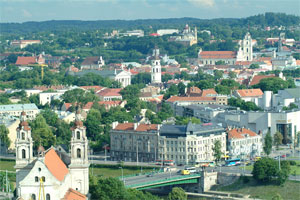
There has never been a better time to visit Lithuania than now as the country enters its second Millennium. Exactly one thousand years later, capital Vilnius has a golden opportunity to reveal its secrets as the European Capital of Culture 2009. The year has seen more than 300 events planned across Vilnius, in addition to 120 projects scheduled for 2010 and 2011 to continue the celebrations.
The capital Vilnius will play host to various festivals from classical music to the Millennium Song and Dance festival, which is attended by over 40 thousand folk dancers and singers worldwide. Kaunas will attract visitors with medieval festivals, while Klaipeda will host Tall Ships’ Races and the festival of European folk culture EUROPEADE.
 If you can’t make it this summer due to a slightly restrictive flight schedule, not to worry, Aer Lingus have decided to launch direct flights to Vilnius, which is great news indeed! The new convenient and competitively priced flights will definitely help to attract more tourists from the UK. Direct flights to Vilnius will commence on 10th September, 3 times a week (Tuesday, Thursday and Saturday). Daily flights start on 24th October. Aer Lingus already operates flights from Dublin to Vilnius 3 times a week (Tuesday, Thursday and Saturday). Tickets to Vilnius are on sale from 9th June, and will be available for travel from the 10th September. For more information on fares and schedules please log onto www.aerlingus.com.
If you can’t make it this summer due to a slightly restrictive flight schedule, not to worry, Aer Lingus have decided to launch direct flights to Vilnius, which is great news indeed! The new convenient and competitively priced flights will definitely help to attract more tourists from the UK. Direct flights to Vilnius will commence on 10th September, 3 times a week (Tuesday, Thursday and Saturday). Daily flights start on 24th October. Aer Lingus already operates flights from Dublin to Vilnius 3 times a week (Tuesday, Thursday and Saturday). Tickets to Vilnius are on sale from 9th June, and will be available for travel from the 10th September. For more information on fares and schedules please log onto www.aerlingus.com.
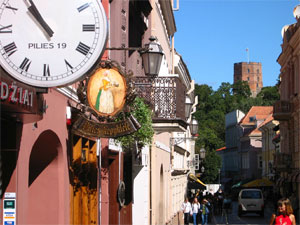
Events Schedule: Vilnius
Vilnius Opera Festival (9 June – 6 July)
The first International Opera Festival will be presenting acknowledged classics of the genre and modern experimental works, most famous theatre troupes, creative team members and artists from Lithuania and abroad, unique works dedicated especially to the festival. www.opera.lt
The Millennium Song Festival (1-6 July)
Continuing our country’s significant cultural tradition dating back to the memorable 1924, the Millennium Song Festival of Lithuania in Vilnius is being arranged. That will be one of the most prominent events in celebration of the Millennium of Lithuania. The traditions and symbolism of Lithuania’s Song and Dance festivals was proclaimed by UNESCO as the masterpiece of the oral and intangible heritage of humanity. The parade of participants, the folk art exhibition, concerts of artistic collectives, the joint performance of amateur theatres “Amerika pirtyje” and many other events will take place. About 40,000 performers from Lithuania and emigrants from all over the world will take part in different programmes. www.dainusvente.lt
Grand Official Opening of the Reconstructed Palace of the Grand Dukes of Lithuania (06 July)
The restoration of Palace of the Grand Dukes in 2009 is one of the most important projects dedicated to Lithuania’s millennium anniversary. The reconstructed Palace will represent a national pride and will be a powerful reminder of Lithuania’s strong traditions as a state. Also it will be an educational centre meant to promote a greater understanding of the country’s history and cultural heritage. http://www.valdovurumai.lt/Istorija/Rumu_istorija.en.htm
Christopher Summer Festival (1 July – 28 August)
The Christopher Summer Festival is the largest and one of the most impressive summer events in Vilnius, which will take place for the 15th time in 2009. The conception of the festival was to be original—in that the events, music and theatre premieres, exceptional projects and performances would be executed in the unique surroundings of Vilnius’ architecture and in the unique courtyards and churches of the Old Town so that it would be especially interesting for both visitors and residents of Vilnius. http://www.kristupofestivaliai.lt/ ; http://www.vilnius-tourism.lt/
Klezmer Festival (25-29 August)
Klezmer Music Festival – the first in the Baltic States will confirm once again that Vilnius has been open to different nations, religions and cultures at all times. The main idea of the Festival is to introduce music which can be played and enjoyed irrespective of religion. http://www.culturelive.lt/en/2009/events2009-re/2009re-4a-9/
Events Schedule: Kernavė:
Festival of experimental archaeology of live archaeology: “Days of Live Archaeology” (4- 6 July)
During the festival prehistoric and early medieval crafts, lifestyle, medieval fights are being demonstrated and archaic music groups perform. A historic and cultural heritage of Lithuania and other European countries from prehistoric to late medieval times will be presented during the event, through the methods of experiment and archaeological reconstruction. http://www.culturelive.lt/en/2009/millennium/kernave/
Events Timetable: Kaunas:
Pazaislis Music festival in Kaunas (01 June – 31 August)
Since 1996 when the first Pažaislis music festival took place a lot of representatives of music elite had visited Lithuania. Festival is famous for the fact, that the listeners of the most particular taste may find in the schedule of the festival something what interests them, starting from the old music and finishing with jazz, from the subtle chamber music to the grand vocal instrumental pieces, from the modern music premieres to the impressive pageants of Lithuanian dramaturgy in the approaches of Kaunas Castle. http://visit.kaunas.lt
Hansa Kaunas 2009 (22 – 23 August)
The Midlle Ages, the knights, and Hansa markets in Kaunas downtown. http://visit.kaunas.lt
Events Timetable: Elaipėda:
Sea Festival (25-26 July) Annual
The main event of Klaipėda city, celebrated annually last week-end of July since 1934. During the festival there are more than 100 various events organized (concerts, fairs, exhibitions, artistic actions, ceremonies of seamen, etc.). It is also famous for traditional sailing regattas BALTIC SAIL and SPRINT CUP taking place during the festival. More than 500 thousands of people are coming to the city during the festival. http://www.klaipedainfo.lt/en/index.php?page=7&sub=18
EUROPEADE (The festival of European folk culture) (22 – 26 July) only this year
For the first time European folk culture festival “Europeade” will take place in Lithuania, in Klaipėda.
The main goal of the festival is „free and peaceful Europe, where cultures of different nations coexist together“. Thus there are cultural forms of more than 20 European States presented during five days of „Europeade“ and thousands of Europeans (approx. 5 thousands) have their folk-art meeting with dances, songs and music.
Klaipėda will become the 25th city, which has been honoured to accept festival for the 46th time and to present uniqueness of our country and its culture, but also contribute to the creation of an image of the country, which cherishes its identity in the framework of Lithuanian Millennium program. www.europeade.eu
The Tall Ships Races Baltic 2009 (31 July – 3 August) only this year
The first regatta of sail training ships “The Tall Ships’ Races” held from Great Britain to Portugal in 1956, had to mark the end of “the epoch of sails”. But, actually, it happened to prophesy a new era for sailing ships and sail training. Every year the regattas are organized in different seas, but they always cover three routes and are hosted by four ports of different countries. In 2009 Klaipeda will host the finals of the regatta. The event is dedicated to the Millennium of the Name of Lithuania. www.talships.lt

